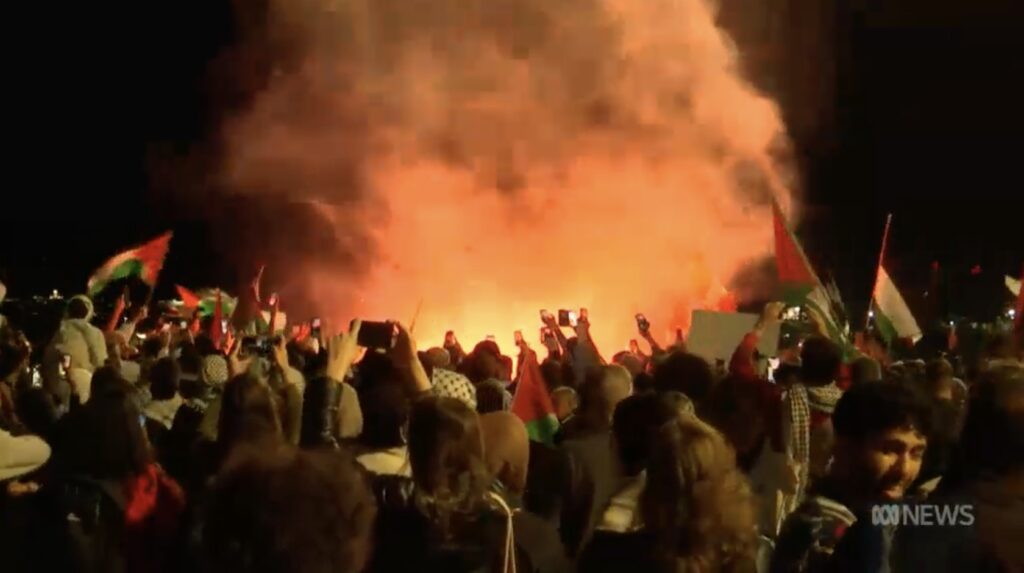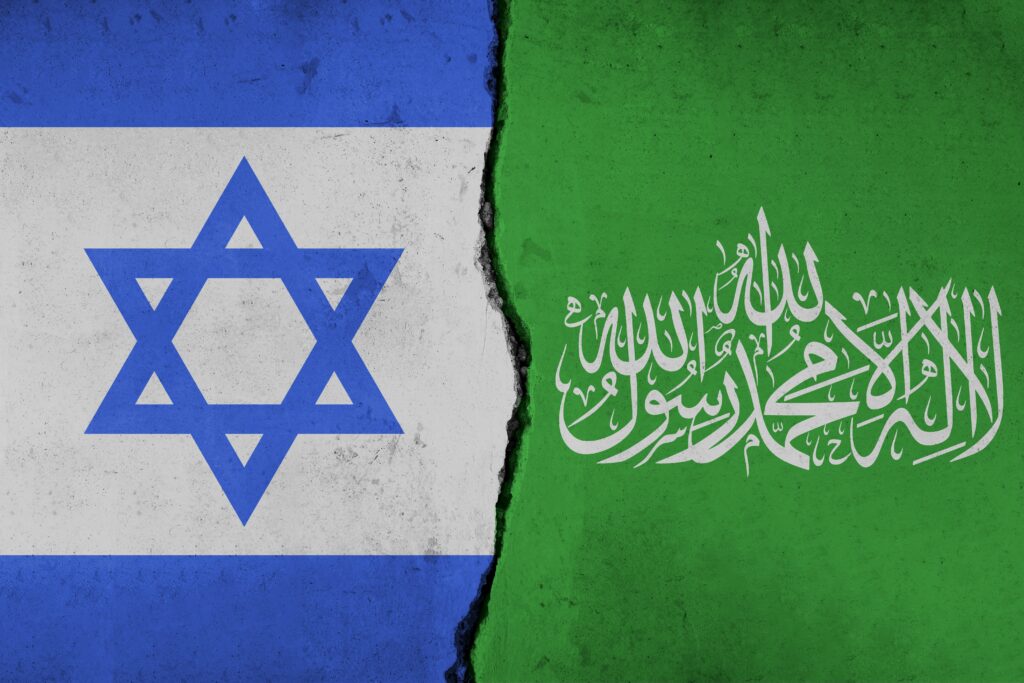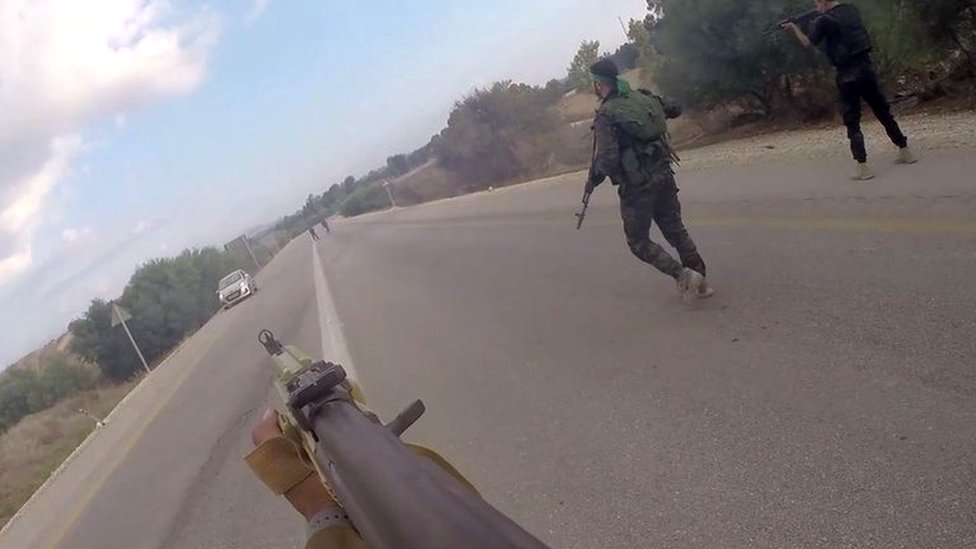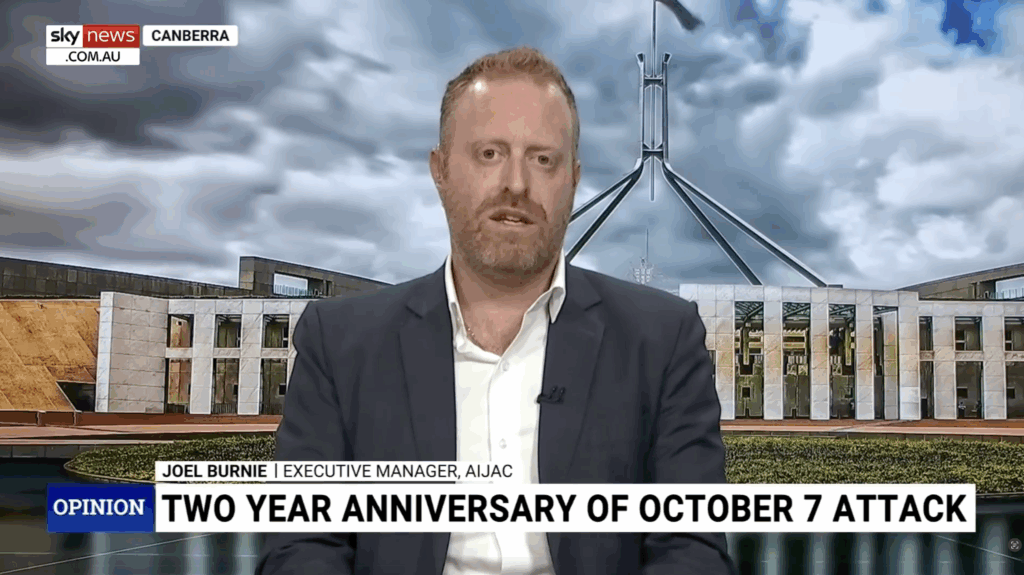UPDATES
Implementation issues with interim Iran nuclear deal
December 5, 2013
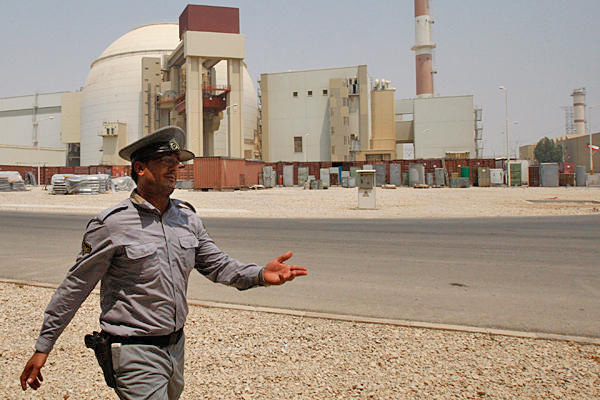
Update from AIJAC
December 5, 2013
Number 12/13 #01
This Update deals with some new revelations about potential delays and other problems with implementing the Geneva interim agreement with Iran reached the Sunday before last – with a US spokesperson acknowledging last week that the agreement is not yet in effect for either party and will not be until further negotiations on technical aspects of it are completed. These technical talks are scheduled to begin next week. Interestingly, Elliot Abrams of the Council on Foreign Relations raised this possibility – that the deal was not yet a finalised, binding agreement – in the aftermath of the Geneva breakthrough.
Meanwhile, Iranian statements have raised questions about how they view both this agreement and the quest for a final deal – accusing the White House of lying about what the agreement says, promising to keep working on the plutonium-producing Arak reactor, President Rouhani promising to intensify nuclear efforts and even build an additional nuclear reactor, Iran’s nuclear chief saying Iran needs five more nuclear plants, statements about increasing production of low-enriched uranium (which the deal forbids), insisting the agreement is not legally binding and Iran will not follow unless satisfied the West is keeping up its end of it, and Foreign Minister Zarif insisting that Iran will decide its own enrichment levels despite what the agreements say.
This Update deals with questions being raised about the implementation process for the agreement, and the other difficulties recently revealed.
First up is some comment on potential problems with this interim period from a number of experts interviewed by the Jewish Telegraphic Agency. Among those cited are Mark Dubowitz from the Foundation for the Defence of Democracy and new Israeli Ambassador to Washington Ron Dermer – with the key fear apparently concerning momentum with regard to the sanctions. According to several of the experts cited, Iran has not yet started to adhere to the limitations agreed, yet companies are already scrambling to make deals with Iran (more on that here), meaning Teheran is likely to get more economic benefits than anticipated under the agreement, and also it will be harder to re-tighten sanctions as necessary. For the full article, CLICK HERE. Also citing similar concerns about the interim period – amidst other concerns – is American columnist Jeffrey Goldberg.
Next up is Israeli journalist and columnist Avi Issacharoff who sees in the handling of the delay before the interim deal actually starts a wider problem of diplomatic ineptitude on Iran by the US Administration. He calls attention to Iranian claims that the accord will not actually stop efforts to build the Arak heavy water reactor – which will produce plutonium, thus providing another route to nuclear weapons. He goes on to explore how Washington’s policy is being received in Saudi Arabia and the other Persian Gulf states. For this complete analysis, CLICK HERE. More comment on US handling of the implementation issue from top US foreign policy expert Adam Garfinkle. More on the Gulf state reaction is here.
Finally, since the Arak reactor has been such an important part of recent debates about Iran’s nuclear program, we offer a slightly older but still highly relevant primer on the subject from Jeremy Bernstein, an author specialising in technical nuclear issues. Bernstein explains how the Arak reactor will work, and why it is such a concern. He makes it very clear that the reactor is not for power generation and that Iran has offered absolutely no reasonable explanation for why they need a plutonium-producing heavy water reactor as opposed to a much-less concerning light water reactor. For this explanation from an expert on the technical details of nuclear power, CLICK HERE.
Readers may also be interested in:
- Revelations about the release of an Iranian nuclear scientist as part of the secret negotiations leading up to the Geneva deal.
- Former CIA head Michael Hayden says, “right now, the Iranians are far too close to a nuclear weapon.”
- Jennifer Rubin notes that the fact that the deal is not yet in operation may provide the bipartisan Congressional opponents of the deal in Washington with room to manoeuvre. Meanwhile, expert Ray Takeyh argues it is time the US Administration brought Congress more into the loop on the Iran negotiations if it wants a helpful stance on sanctions.
- Author Edwin Black notes that the deal does nothing about Iran’s nuclear weaponisation and warhead programs, and updates readers on the state of both.
- An Israeli opposition Labor party leader explains why his party supports Netanyahu’s approach on Iran. Meanwhile, Netanyahu’s stance appears to have given him a boost in Israeli polls.
- Comments on the Iran deal from expert (and past AIJAC guest) Emanuele Ottolenghi – here and here. Also, an excellent piece from thinktank Iran specialist Reuel Marc Gerecht.
- Yet more on the Saudi reaction from expert John Hannah.
- Some examples from the many stories and comments now appearing at AIJAC’s daily “Fresh AIR” blog:
- Ahron Shapiro on a telling libel by Amnesty International on the Gaza electricity crisis.
- Sharyn Mittelman on Israel’s great success in solving its water problem, and the huge potential this offers both the Palestinians and the wider Arab world – if they can only bring themselves to cooperate with Israel.
- Also, Sharyn Mittelman was in the Canberra Times discussing why changes in Australia’s UN voting on Israel are good for peace.
Delay in launch of nukes deal gives Iran an edge, some say
By Ron Kampeas
Jewish Telegraphic Agency, December 3, 2013
WASHINGTON (JTA) — There’s the six-month interim deal on Iran’s nuclear program that trades some sanctions relief for a freeze on Iran’s nuclear program. And then there’s the interim before the interim begins.
Little noticed in the wake of the historic pact reached last month by Iran and the major powers is the fact that technically, the deal is not yet underway. A commission of experts from the United States, Russia, Germany, Britain, China and France, working with Iran and the International Atomic Energy Agency, first must work out the technical details before the deal officially goes into effect.
The commission is not scheduled to meet until January. And even then it’s not clear how long it might take to reach an agreement.
“Obviously, once that’s — those technical discussions are worked through, I guess the clock would start,” Jen Psaki, the State Department spokeswoman, said in a news briefing on Nov. 27.
Under the terms of the deal reached in Geneva last month, Iran agreed to limit its enrichment of uranium to 5 percent, freeze most of its centrifuges and halt construction on its plutonium reactor. In exchange it would receive sanctions relief totaling approximately $7 billion.
President Obama strongly supported the deal, which was intended to provide a six-month window in which to conclude a final agreement on Iran’s nuclear program. Critics, foremost among them Israeli Prime Minister Benjamin Netanyahu, saw the agreement as a historic blunder, arguing that it would advance Iran toward the acquisition of a nuclear weapon.
Some critics say the uncertainty over when the deal kicks in also works in Iran’s favor.
“Every day that goes by where Iran is not bound to roll back its nuclear program but still can benefit from a shift in the market psychology from fear to greed puts money in the regime’s pocket without doing anything to address their growing nuclear weapons capacity,” said Mark Dubowitz, the executive director of the Foundation for Defense of Democracies, which has helped shape many of the tough sanctions passed in recent years by Congress.
Dubowitz’s colleague, Foundation for Defense of Democracies vice president Jonathan Schanzer, on Tuesday tweeted links to Arab media reports that some European oil companies already are considering new business with Iran. The French oil giant Total reportedly said last month that it would resume dealings with Iran if sanctions are revoked.
Ron Dermer, the new Israeli envoy to Washington, also has cast the argument as one of momentum. In briefings to members of Congress and Jewish groups, Dermer has argued that before the deal, tough sanctions and the likelihood of more to come had Iran on the ropes. With a deal in place, however, the momentum could reverse direction — companies that once feared being cut off from the U.S. economy might consider deals with Iran.
Obama administration officials adamantly deny the scenario. The principal sanctions targeting Iran’s energy and banking sectors will stay in place even during the interim deal, they say.
“Right now our sanctions remain in place,” John Sullivan, spokesman for the Office of Foreign Assets Control, the Treasury section that monitors sanctions compliance, told JTA. “More guidance on the relief package will be forthcoming from Treasury and our interagency partners.
“What we agreed to is clear and limited. We will continue to enforce our sanctions aggressively.”
Alireza Nader, an Iran expert at the Rand Corp., a think tank with close ties to the U.S. defense establishment, said that even those nations and companies eager for sanctions relief would not bust sanctions now for fear of alienating the United States. India and China, he said, would risk U.S. waivers granted them on some dealings with Iran should they be seen as planning new business with the country.
“Most countries are still wary of having normal energy ties with Iran,” he said.
Michael Adler, an Iran expert at the congressionally funded Wilson Center, acknowledged that the momentum argument has merit. But he noted that provisions in the deal that would resume sanctions should Iran not comply ultimately are enough to scare companies away from resuming business with the country.
“To say that it will lead to Total resuming contracts with Iran is wrong,” Adler said. “You can be concerned you’re changing from a tightening mode to a lightening mode, but the deal is structured in such a way that all the sanctions are reversible and the money they’re getting is a drop in the bucket.”
Tags: Iran, Iran nuclear, Ron Dermer, Alireza Nader, Rand Corporation, Michael Adler, Wilson Center, Patrick Clawson, Washington Institute for Near East Policy
Now is a critical time for you to support JTA. Please donate today.
Ron Kampeas is JTA’s Washington bureau chief, responsible for coordinating coverage in the U.S. capital and analyzing political developments that affect the Jewish world.
Back to Top
————————————————————————
How sloppy US diplomacy is empowering Iran
Israel isn’t the only Middle East player concluding that the Geneva negotiators deserve a prize for incompetence, and that a dire amateurish trend is gathering pace
By Avi Issacharoff
Times of Israel, November 29, 2013, 9:14 am
After all the hype about an interim agreement between Iran and world powers on Sunday, it became clear on Wednesday that the deal is not actually finalized. Not only has the six-month interim agreement not come into effect yet, but also Iran is free to proceed with its military program at full speed until the deal’s final “technical” details have been worked out, as US State Department Spokeswoman Jen Psaki put it.
Psaki was speaking on Tuesday, just a few hours after Iranian Foreign Minister Mohammad Javad Zarif announced that his country’s interim agreement with the P5+1 — the five permanent members of the United Nations Security Council and Germany — does not obligate it to stop construction of the heavy-water production plant in Arak, which could be used in the production of weapons-grade plutonium. Zarif said the agreement only required Iran to cease heavy water production at the site.
Various experts have also said that the agreement published by the White House leaves the Iranians the ability to manufacture crucial components for their nuclear program outside the Arak facility and install them if the site is reopened. The highlight came later on Tuesday when the Iranian Foreign Ministry announced that the agreement Washington published was not the one it had agreed to. If it weren’t so sad, it might almost be funny.
In her earlier announcement, Psaki explained that there is no clear timetable for implementing the signed interim agreement with Iran. If that is really the case, someone on the American negotiating team in Geneva deserves a prize for incompetence – or possibly for misleading the public.
Leaving aside Prime Minister Benjamin Netanyahu’s contempt for the interim accord, and his now openly problematic relationship with President Barack Obama over this most acute of crisis, certain Arab countries, particularly those belonging to the Saudi-Egyptian camp, see the handling of the negotiations with Iran and the resulting agreement as part of trend. The White House, they say, is reliably amateurish and clumsy when attempting to intervene in the Middle East. In 2010, White House Spokesperson Robert Gibbs declared that the administration had no intention of allowing Iran to continue enriching uranium. But as of November 2013, under the interim deal’s terms — which allow Iran to continue enrichment to 5% — Washington has consented to this very thing. So happily state Iranian President Hassan Rouhani, supreme leader Ayatollah Ali Khamenei, Zarif, and other Iranian leaders.
The nuclear issue is not the only one that worries various countries in the region, particularly Saudi Arabia. “The [Persian] Gulf countries are now concerned that the US is essentially supporting Iranian hegemony in the region and that there in nothing that they can do about it,” said professor Asher Susser, of the Department of Modern Middle Eastern History and The Moshe Dayan Center for Middle Eastern and African studies at Tel Aviv University. “An important historical shift is now reaching its climax. The Middle East’s center has shifted from the Arab countries to the Persian Gulf. And when the US permits Iranian hegemony, it projects onto the situation in Syria, Iraq and other places. Saudi Arabia is now concerned about the Iranian-Shi’ite subversion, which is only expected to worsen over time.
The problem for these worried countries, Susser went on, “is, again, that there is nothing that they can do. Consider Syria, for example. Everyone has buried [President Basher] Assad, and who’s fighting alongside him? Iran and Hezbollah. Which Arab country has taken his side? Not a single one. No country has given him military support.”
According to Susser, if these processes continue, the Arab countries will have no choice but to tighten bonds with Iran. “They won’t like it but they may not have any other alternative,” he said.
Making Riyadh sweat
The first signs of these tightening bonds were already apparent this week, when Turkish Foreign Minister Ahmet Davutoglu visited Tehran and met with Rouhani and Zarif. Davutoglu welcomed Iran’s announcement that it is willing to attend the second round of talks to try to find a political solution to the Syrian crisis scheduled for January 2014 in Geneva.
Khalid Bin Ahmed al-Khalifa, the foreign minister of Bahrain, has also invited Tehran to participate in a dialogue held annually in Manama, Bahrain’s capital. The foreign minister noted that his country was one of the first to acknowledge the interim agreement between Iran and the world powers. This is the same Bahrain that Tehran considers to be Iran’s 14th province.
If all that wasn’t enough to cause Saudi Arabia to break out in a cold sweat, there was the phone call between Damascus and Tehran on Wednesday. Assad, who has taught the leaders of the Arab world a thing or two about survival, spoke to his Iranian counterpart. According to reports from Syria, Rouhani promised to support Damascus in its war against the “terrorists.” Assad added that Iran’s success in Geneva would enhance its position in the region and in the world and that a strategic partnership between the two countries would have bearing on the situation in Syria.
Dr. Michal Yaari, an expert on Saudi Arabian foreign policy from the Open University and Bar Ilan University, said that Riyadh’s greatest concern is that the US will to ignore Saudi Arabian interests and focus on Iran. “Outwardly, they have been relatively cordial. They did not attack the Geneva agreement outright, they only hinted at their objections,” he said. “But beneath the surface, Riyadh understands that Washington may choose to proceed in a way that conflicts with Saudi Arabian interests, causing a crisis.
Iran, she clarified, “is their greatest enemy. On the religious front, there’s the hostility between the Sunnis and the Shiites. On the ethnic front, there’s the Arab-Persian conflict. From a security perspective, since Iraq disintegrated, no power has been able to stand in the way of Iranian hegemony in the Persian Gulf. And politically, there are the Iranian attempts to weaken the monarchies in the region. They see an Iranian threat everywhere they turn. So while Tehran may not have the upper hand in all of the conflicts in the region, it certainly is not losing its battles.”
There have been quite a few reports recently of improved relations between Riyadh and Jerusalem, including of senior officials in Saudi Arabia who referred directly to the two countries’ shared interests. But Yaari doesn’t recommend that Israel start preparing to host the Saudi king in Jerusalem just yet.
“The Saudi ambassador to Britain made a statement the day before the interim agreement was signed, to the effect that his country won’t ‘stand idly by’ while Iran remains a threat. But he made sure to mention Israel’s nuclear reactor, as a form of lip service. Statements about improved relations between Israel and Saudi Arabia are harmful to Riyadh.
“Saudi Arabia may need Israel’s assistance on security issues to a certain extent, but any relationship between the two countries will harm its position in the Arab world,” Yaari elaborated. “So if any such relationship is formed, Saudi Arabia will insist on keeping it a secret.”
Back to Top
————————————————————————
Iran’s Plutonium Game
There have been conflicting reports about why the much-watched negotiations in Geneva failed to produce an interim agreement about Iran’s nuclear program. On Monday, senior US officials said that the Iranian delegation was not ready to sign on to a draft agreement, which called for a six-month freeze in Iran’s uranium enrichment activity to allow time to produce a comprehensive accord. But over the weekend, French officials gave another reason: the French government is concerned about the continuing construction of a heavy-water nuclear reactor at Arak.
In fact, to anyone who has been following the Iranian nuclear program, it was almost a forgone conclusion that negotiations with Iran would hit a road block when it came to the so-called IR-40 reactor located in Arak. The “40” here refers to the projected power output of forty megawatts of thermal power. To convert this into electric power involves a cumbersome process. The thermal power, which is generated in the form of energetic fission fragments in the reactor, must be converted into steam to run inefficient steam turbines. Thus much of the original reactor generated energy is dissipated; something like only a third of this power could be converted into electricity. And since one large building alone can use several megawatts of power, it is hard to imagine generating much electricity from a forty-megawatt reactor. Whatever the IR-40’s intended use, it is not to produce electric power. A reactor designed for that purpose—such as the one at Bushehr—produces billions of watts.
Moreover, there is nothing about the reactor’s declared purpose that would require it to be a heavy water reactor. According to the Iranian government, the IR-40 reactor is supposed to make medical isotopes. But a light water reactor would have served the stated purpose just as well—and generate the same amount of power.
What makes the Arak reactor suspicious, then, is the design. To understand this we need to understand how a heavy water reactor works.
The isotope of uranium that is fissioned in a nuclear reactor is uranium-235. The fission happens when a neutron strikes a uranium-235 nucleus causing it to split and also producing additional neutrons. These neutrons in turn can cause other uranium 235 nuclei to split and it is this chain reaction that produces the power. One of the oddities of quantum mechanics is that the probability of fission increases when the neutrons are slowed down. Unlike breaking a window with a baseball, it is not the case that speeding up the ball makes it more likely to break the window. In quantum mechanics, it is rather as if the baseball gets bigger when it travels at a slower speed, causing a larger collision with the window.
Hence in order to cause fission, the neutrons, which are initially moving very rapidly, must be “moderated” in their speed and this is done by having them collide with the nuclei of some “moderator” such as ordinary water. There is now a balancing act. Moderators can swallow neutrons taking them out of the chain. Ordinary water does that. To compensate one must enhance the percentage of uranium 235 in the fuel. In a so-called light water reactor, which uses ordinary water , the uranium 235 must be enhanced to produce enriched uranium containing about four percent uranium 235. So a supply of enriched uranium is necessary to power a light water reactor.
This is not the case with a heavy water reactor. A heavy water nucleus consists of one proton and one neutron plus oxygen as opposed to light water where the neutron is missing; this means there is less of a chance of neutron swallowing. So one can use natural uranium, which has less that one percent of uranium 235. But this method also produces plutonium as a byproduct—something that is useful for making a bomb.
To make plutonium you need to maximize the percentage of uranium 238. The reason is the chain of reactions that produce plutonium: uranium 238 absorbs a neutron and become uranium 239; this is unstable and decays into neptunium 239; this is also unstable and decays into plutonium 239. For a reactor of the type being built at Arak, a rough rule is that in the course of a day, for each megawatt of thermal power generated one gram of plutonium is produced. Thus the IR-40 could produce forty grams of plutonium per day. If it ran constantly for a year, it could generate 365 x 40 = 14,600 grams =14.6 kilograms of plutonium. Realistically it might operate about 75 or 80 percent of the time, so 11 to 12 kilograms is probably a better estimate.
This amount of plutonium is enough for one or two bombs. Once Iran has reprocessed it, the plutonium could replace high-enriched uranium as the explosive, as it did in the plutonium bomb dropped on Nagaski. The Iranian government has announced that the Arak reactor will go on line in 2014. What still has to be verified is that there are no facilities at this site for reprocessing any spent fuel elements to extract plutonium.
On August 28 of this year, the International Atomic Energy Agency (IAEA) produced its latest report on Iran. Of the Arak reactor it said:
Contrary to Iran’s obligations under the modified Code 3.1 of the General Part of the Subsidiary Arrangements to its Safeguards Agreement and although the Agency has made repeated requests, Iran has not provided the Agency with an updated DIQ [Design Infomation Quetsionnaire]for the IR-40 Reactor since 2006. At that time, the IR-40 Reactor was in a very early stage of construction. As the commencement of the IR-40 Reactor’s operation approaches, the lack of up to date design information is having an increasingly adverse impact on the Agency’s ability to verify the design of the facility and to implement an effective safeguards approach. The Agency requires this information as early as possible in order, inter alia, to ensure that all possible diversion paths are identified, and appropriate safeguards measures and customized safeguards equipment are put in place.
On Monday, the IAEA and Iran issued a joint statement saying that they had reached a new “framework of cooperation” to gain information on Iran’s nuclear program. But all the agreement says is that Iran will provide “information on all new research reactors.” (The second clause in the annex of the agreement says that Iran will provide to the IAEA “mutually agreed relevant information and managed access to the Heavy Water Production Plant.” This is a reference to a plant, also near Arak, where heavy water is produced, one imagines, for the IR-40 and any successors.) What is left unspecified is the time frame in which this information is going to be supplied.
It is hard to imagine any legitimate reason for not converting the Arak reactor into a light water reactor. The Iranians have enough enriched uranium fuel to power such a reactor, and surely it would be worth the while of the countries that are now negotiating with Iran to offer to help in this endeavor. If the IR-40 became a light water reactor, this would end all the suspicions about it.
By going ahead with a heavy water reactor, Iran seems to be saying it is determined to have the capacity to produce plutonium—and leave open a path to making a bomb. But it is very difficult to read the real intentions of the Iranians. Perhaps the fact that real negotiations have begun offers some hope that a tragedy can be avoided.
Jeremy Bernstein’s books include Plutonium: A History of the World’s Most Dangerous Element and Nuclear Weapons: What You Need to Know. His latest book is A Palette of Particles.
(November 2013)
Tags: International Security

